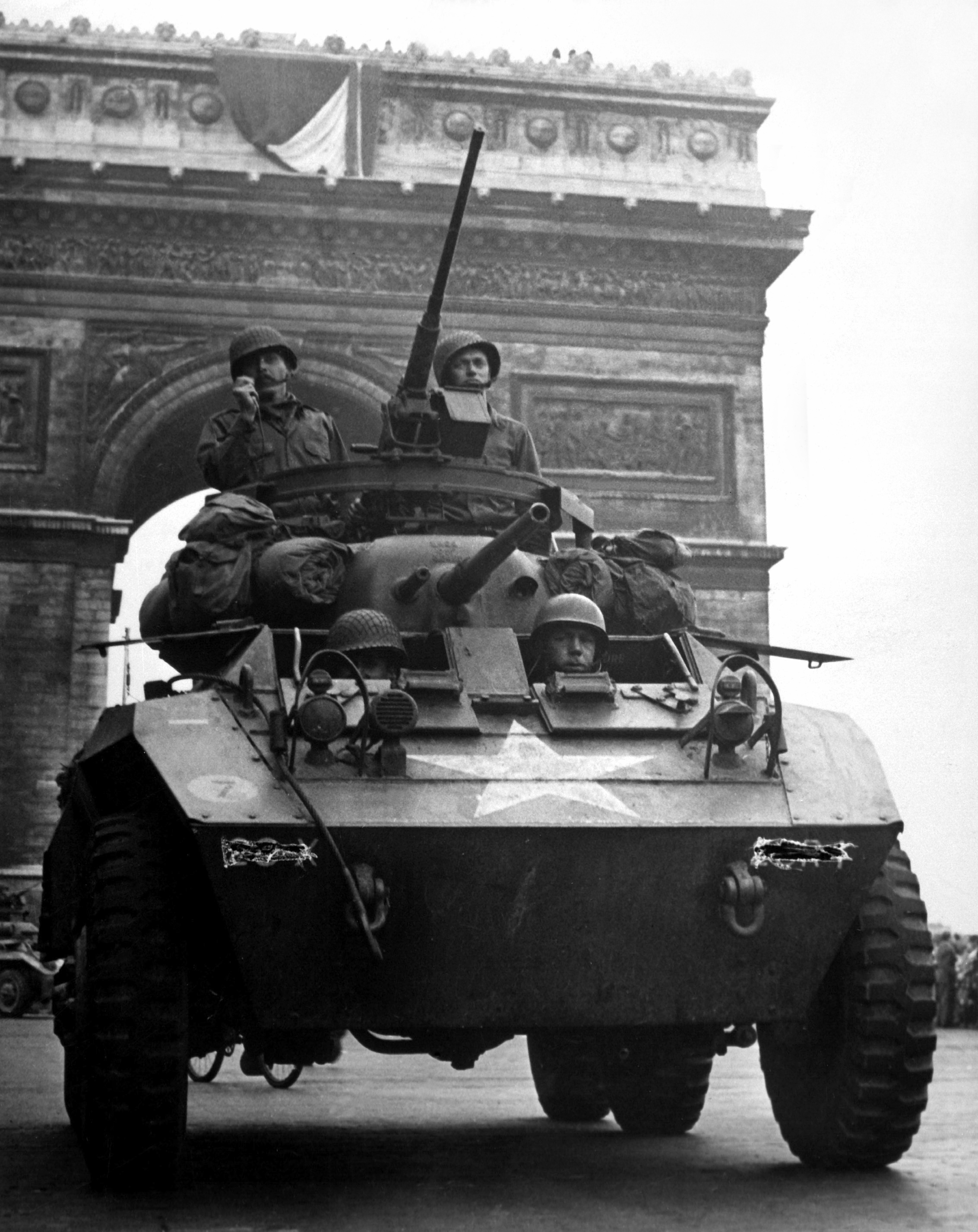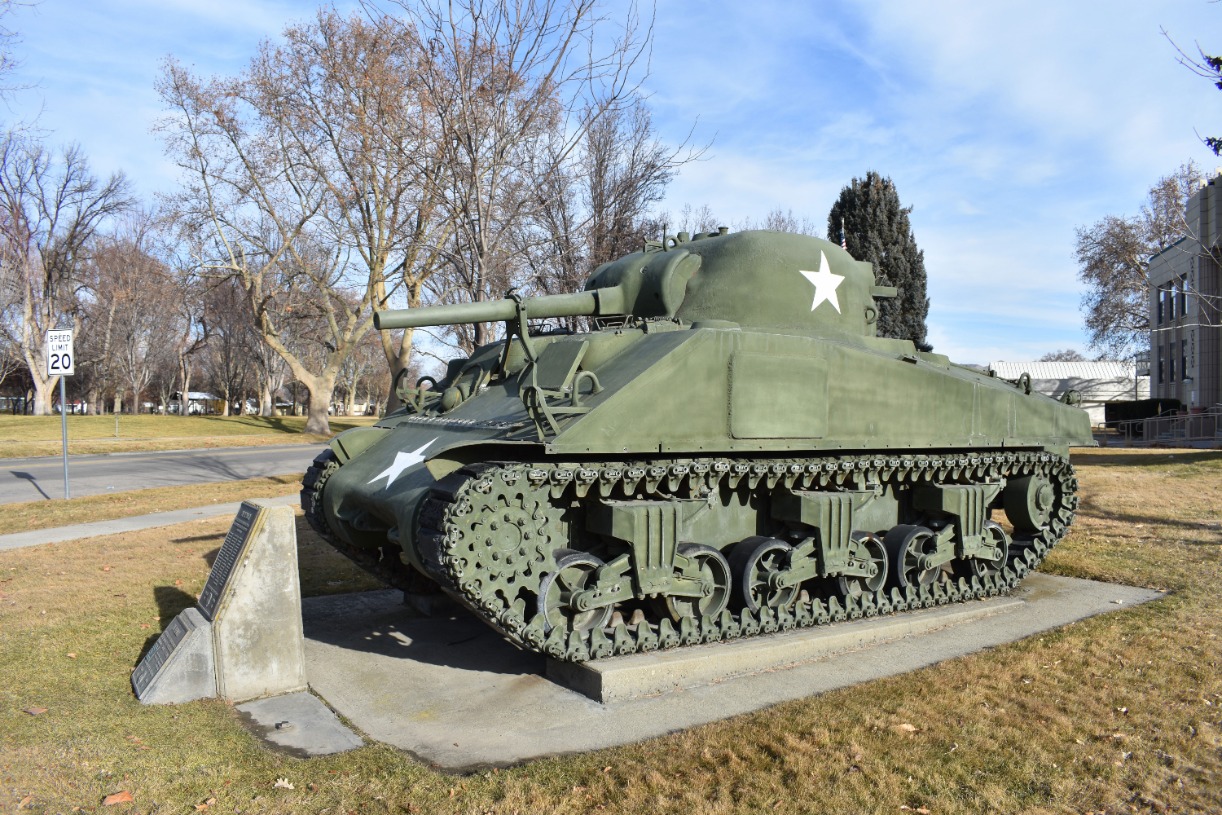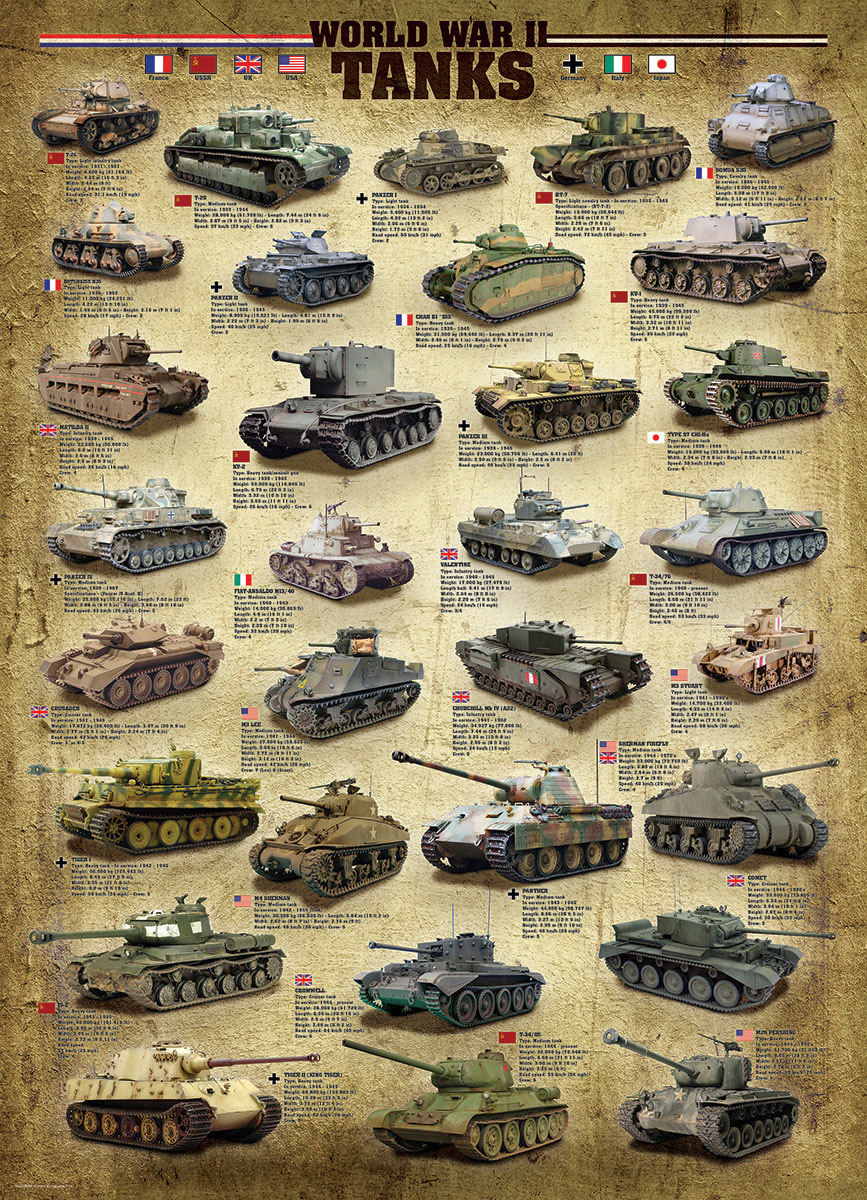Us Tank Ww2 - In turn, the M-4 was good in 1942, adequate in 1943, and completely dominant through 1944. Unfortunately for American tanks, the war lasted until 1945.
American tanks in World War II were generally inferior to their German counterparts. German tanks have better armor protection and more firepower.
Us Tank Ww2

But armor and lethality don't tell the whole story. These American tanks were superior to their opponents in other important aspects. The M-4 Sherman, in particular, helped the American army in the war, even though they were massively destroyed by German tanks during the war.
Squadron Signal Wwii Us Sherman Tank In Action
Sherman's shortcomings were a product of his origins. Before the war, American tank design and development was bipolar—the result of the competing demands of the infantry and cavalry branches of the Army.
Infantrymen wanted a tank that - not surprisingly - could support infantrymen on the battlefield. Infantry generals loved a vehicle with a big gun that could take out enemy bunkers sitting still.
In contrast, the cavalry - the scouts of the Army - preferred a fast-moving tank that could accelerate through gaps in the enemy line. The free space was not disturbed by the protection of the armor.
Two tank philosophies that are diametrically opposed. And the Great Depression compounded the problem - R&D funds ran out.
Ww2 Us Army Sherman Tank Transporter Stock Photo
Shortly after the outbreak of the Second World War, the United States supplied Great Britain with tanks. The loss of France was a terrible blow to Allied industrial production - Great Britain could not produce everything it needed on its own.
The first American export, the M-3 Grant, had a low-velocity 75mm gun for engaging infantry and a high-velocity 37mm anti-tank gun in the turret.
It may sound impressive, but Grant had two guns because the Americans did not have a single gun capable of engaging both infantry and tanks. The Grant's layout also gave it a high profile on the battlefield, making it easy to spot...and therefore destroy.

Grant's baptism of fire was the Battle of Gazala in North Africa in the spring of 1942. The British Army deployed 167 subs against the Panzer III and IV tanks of the German 15th Panzer Division.
M24 Chaffee, Vol. 1: American Light Tank In World War Ii, Korea, And Vietnam: Doyle, David: 9780764358593: Books
Although the German Afrika Korps eventually forced the British out, the appearance of the 75mm cannon - a first for the British - came as a surprise to the Germans.
As long as Grant had enough, the war forced the creation of faster and more deadly tanks almost every month. A new, more lethal version of the Panzer IV, the so-called Mark IV Special, appeared three months before the war.
In America, tank designers were already working on Grant's successor. The new Sherman packs a single 75mm gun. The crew was only five, compared to Grant's seven. The M-4 has a number of improvements based on British experience with Grant in North Africa.
Even at the time of introduction, Sherman was really nothing to get excited about. Protection was unusual and required constant improvements, such as an extra inch of steel welded to the hull to protect the gun's main ammunition, as well as a "wet loading" system that bathed the ammunition in water to prevent it from exploding in to prevent it directly. hit
Fleet Of Military Tanks Up For Auction
Sherman's 75 mm cannon was nothing special either. It was powerless against the latest German tanks, especially the Tiger and Panther. The rifle was more suitable for taking out poorly armed targets - semi-automatic, artillery, infantry.
American intelligence rated the Sherman on par with the Panzer IV, the mainstay of the German tank force. America concluded that Sherman was good enough. Unfortunately, the US could not accurately predict the production of newer and more powerful German designs such as the Panther and Tiger.
The US Army believed that although the Sherman was inferior to these tanks, the new German models rarely appeared on the battlefield.

The Sherman was not the best tank, but due to efficient American production methods it would be the most productive. The United States built 49,234 Sherman tanks between 1942 and 1945.
M4 Sherman Tank U.s. Army Millitary World War Ii Ww2 1:64 Diecast Model
Most went to the US Army and US Marine Corps, which was undergoing massive wartime expansion. Washington gave 21,959 tanks to the allied forces. Great Britain, the Free French Forces, Poland, Brazil, New Zealand, China, and the Soviet Union all fielded M-4 aircraft.
Many armies depended on American factories to keep them in Shermans. Regardless, the assembly lines had to keep moving. To maintain high production levels, managers kept design changes to an absolute minimum.
Introducing a new tank design, or even making major changes to an existing one, means fewer tanks.
The ground forces of the army, who controlled the equipment of the ground combat division, watched the long game. Taking into account the army's bad experience of field equipment in the First World War, the AGF wanted mature and reliable vehicles. The tanks built in Detroit only to be scrapped in France were worse than worthless.
Us Tank Crew Plows Through Deep Mud, Italy, 1943
The military was well aware that German and Soviet tanks were getting bigger and more powerful, but the United States would have trouble keeping up. German and Russian tanks on the Eastern Front could travel by train, but American tanks had to be loaded onto freighters—a much more expensive mode of transportation that imposed its own limitations on vehicle design and production.
Finally, the Army considered tank forces within a real weapons ecosystem. Infantrymen, tanks, artillery, engineers and aircraft were all part of the same team.
In this way of thinking, tanks should not take on other tanks. Instead, armored vehicles have to exploit holes in the enemy line, run in and start blowing things up. Infantry, aircraft, artillery, and tank destroyers - tank-like but lightly armored vehicles - were busy with the enemy tanks as the American tanks spread.

There was a problem with this argument. Just because the Army wanted its Shermans to avoid the mighty German Panthers and Tigers didn't mean these encounters didn't happen.
American Tank Destroyers At El Guettar
To make matters worse for American tankers, the Army's inability to properly predict German tank production, which was much higher than expected, meant that there were many more tanks on the battlefield than the Army had originally hoped.
The US finally fielded a new, heavier tank in early 1945. With a 90mm gun and thicker armor, the M-26 Pershing corrected many of the Sherman's worst shortcomings. In the battles for Cologne, the M-26 dominated the German Panthers - even if the new American machine was less powerful and reliable than the Sherman.
The development of American tanks after the war ensured that American tankers would never again dominate the battlefield. The M-60 series of tanks and then the M-1 Abrams tanks were at least similar to the Soviet models.
This was largely due to the fact that American troops were now permanently stationed in Europe and did not have to rush abroad in case of war. Designers of American tanks were limited only by their imagination and cost.
Us Tank Unit England Getting Ready Editorial Stock Photo
However, because Sherman is often infamous, it's important to see it in context. Sherman's side won the battle. The M18 Hellcat (officially designated the 76 mm Motor Carriage M18 or M18 GMC) was a tank destroyer used by the US Army in World War II and the Korean War. A top speed of up to 55 mph (89 km/h) was achieved by keeping the armor to a minimum, using the innovative Torqmatic automatic transmission, and by equipping the relatively lightweight car with the same main gun as some of the much larger variants . . Thank you Sherman.
The M18 Hellcat was the culmination of the development of several fast tank destroyer prototypes since 1941. In full production in the summer of 1943, the M18 first saw combat service in the spring of 1944. The M18 was used primarily in West- Europe, but that was there too. smaller numbers in Italy and the Pacific. Production continued until October 1944, with 2,507 built.
The Hellcat was the most effective American tank destroyer of World War II. It suffered more casualties than any other tank or tank destroyer fielded by American forces in World War II.

The total number of victims was 526: 498 in Europe, 17 in Italy and 11 in the Pacific. The kill-to-casualty ratio in Europe was 2.3 to 1, and the overall kill-to-casualty ratio was 2.4 to 1.
Wwii Us Marine Corps Sherman Tanks Acrylic Paint Set (6 Colors) Ammo By Mig Jimenez
M18s "...were not used primarily for tank warfare, but rather in improvised roles, mostly direct fire support for infantry."
Although the M18 was withdrawn from US service immediately after World War II, a variant of the M39 armored car served in the Korean War, and M18s remained in service with some countries until 1995.
The M18 Hellcat exemplified the balancing act between firepower, armor and mobility in armored fighting vehicle design. Despite its excellent mobility and powerful main gun, the M18 Hellcat also had its shortcomings, including thin armor and an explosive shell for its main gun. Historian Steve J. Zaloga described the overall design of the M18 as "poorly balanced" and stated that "the Hellcat's combat record is due to the training and dedication of its crew, not to its poor design."
When the Tank Destroyer Force was formed in 1941, its commander, Lieutenant Colonel (later General) Andrew Davis Bruce
World War Ii Tanks: Western Allies 1939 45: Us, British, Australian, Canadian, French, Polish By David Porter
Us ww2 heavy tank, us tank commander ww2, ww2 us tank jacket, ww2 us tank crew, us tank destroyers ww2, us tank losses ww2, us tank crews ww2, us tank production ww2, ww2 us tank, ww2 us tank crew uniform, ww2 tank, us tank destroyers of ww2
0 Comments